
November 2025 has emerged as a defining moment for automotive design innovation. Designers are showcasing bold concepts that push boundaries in sustainability, functionality, and aesthetic evolution. From hydrogen-powered overlanders to ultra-futuristic electric motorcycles, this month’s standout designs represent a fascinating glimpse into the industry’s evolving vision. The convergence of environmental consciousness and cutting-edge technology has produced remarkable vehicles.
These designs aren’t just transportation solutions—they’re statements about our collective automotive future. The industry’s pivot toward environmental responsibility while maintaining performance excellence demonstrat…

November 2025 has emerged as a defining moment for automotive design innovation. Designers are showcasing bold concepts that push boundaries in sustainability, functionality, and aesthetic evolution. From hydrogen-powered overlanders to ultra-futuristic electric motorcycles, this month’s standout designs represent a fascinating glimpse into the industry’s evolving vision. The convergence of environmental consciousness and cutting-edge technology has produced remarkable vehicles.
These designs aren’t just transportation solutions—they’re statements about our collective automotive future. The industry’s pivot toward environmental responsibility while maintaining performance excellence demonstrates sophisticated engineering approaches. Each concept addresses specific user needs through thoughtful design language and innovative technology integration. This represents automotive design at its most forward-thinking and purposeful state.
1. Kia PV5 WKNDR Concept
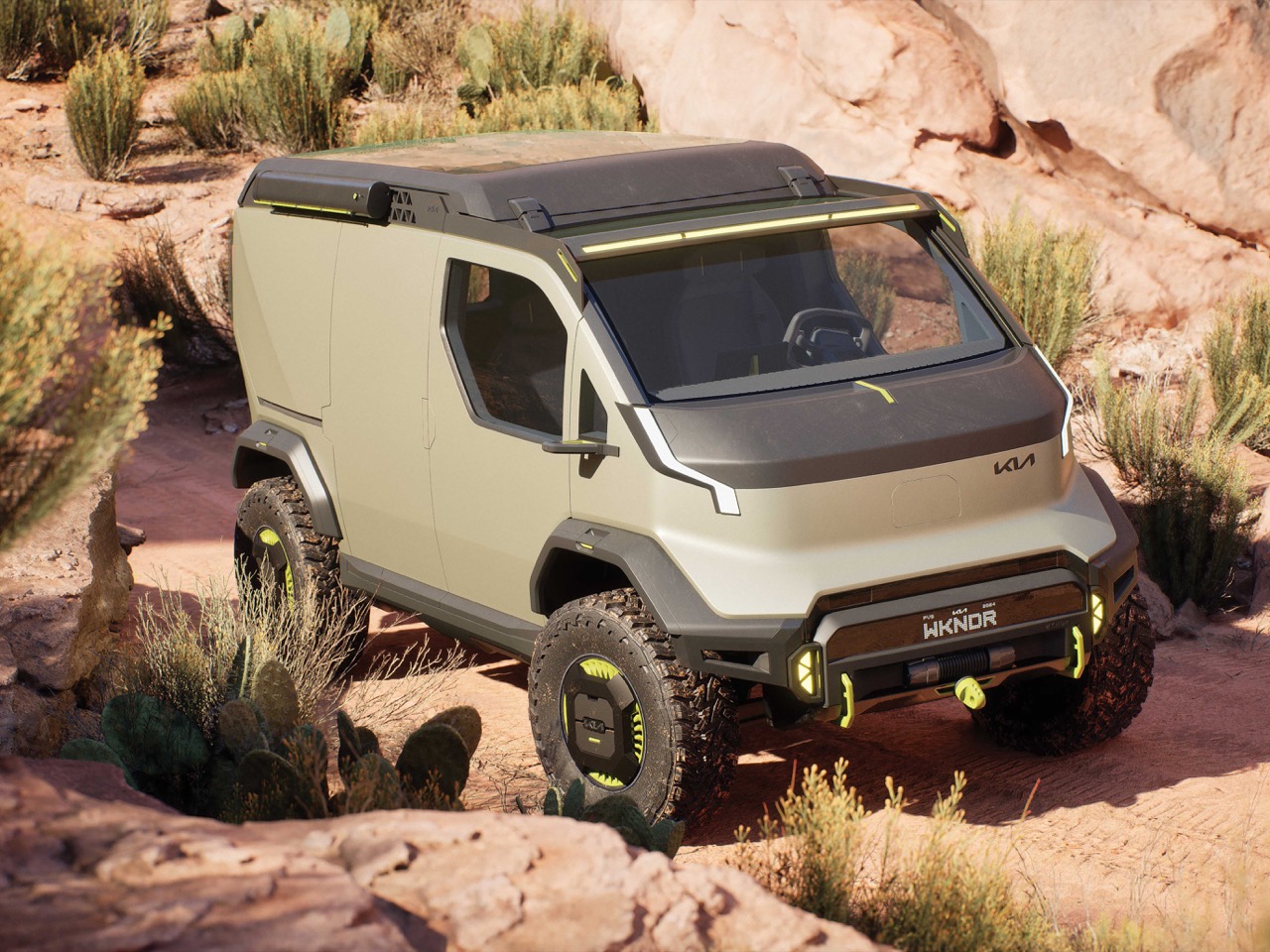
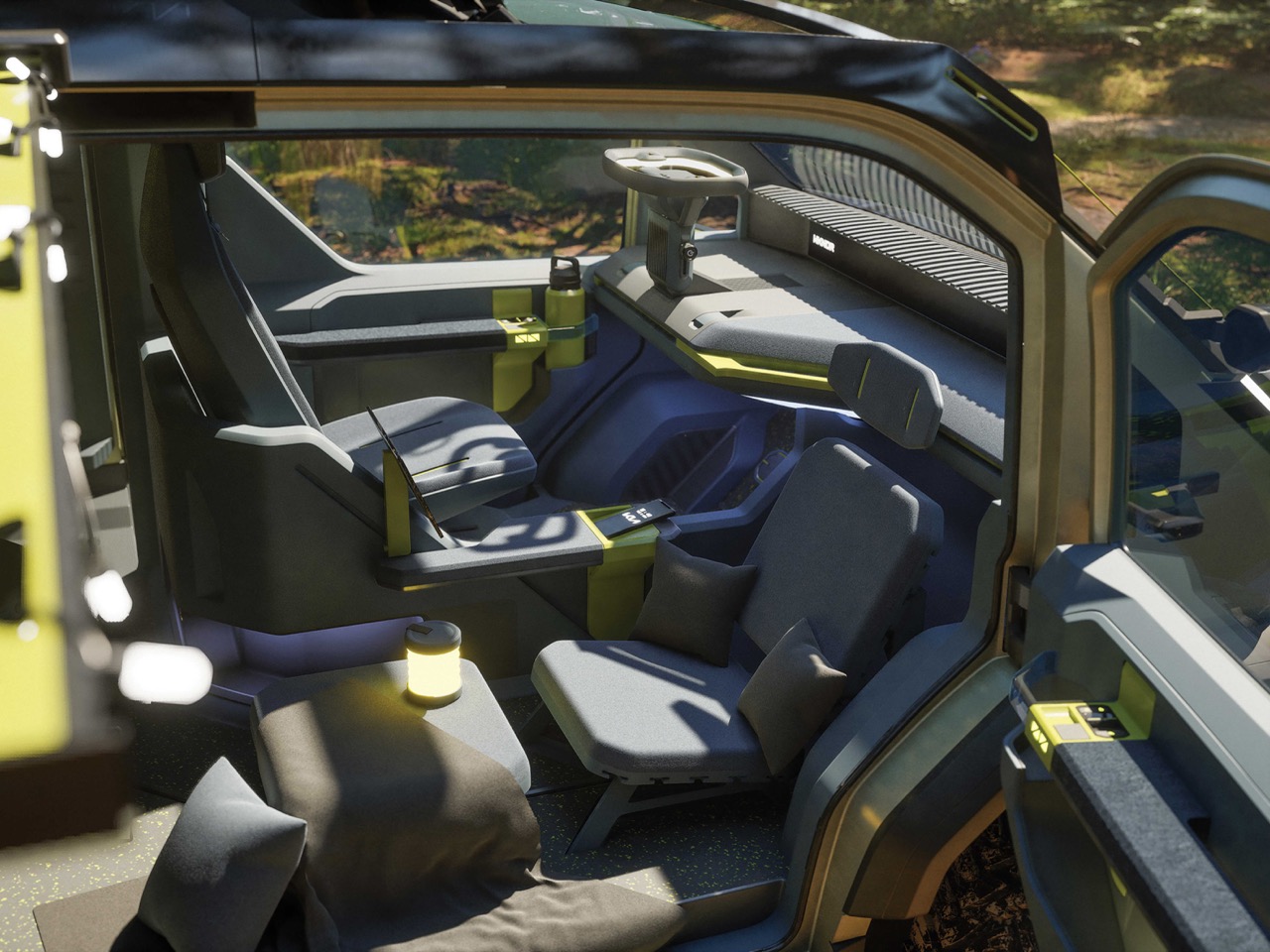
The PV5 WKNDR Concept embodies Kia’s understanding that modern transportation transcends simple point-to-point mobility. This Red Dot ‘Best of the Best’ award winner represents a strategic pivot toward vehicles that serve as lifestyle enablers rather than mere conveyances. The design philosophy centers on the reality that contemporary users demand spaces that seamlessly transition between work, travel, and recreation without compromising efficiency or comfort.
Kia’s design team has crafted something that speaks directly to urban professionals seeking weekend escapes and digital nomads requiring mobile workspaces. The concept’s modular interior architecture allows for complete spatial reconfiguration, transforming from a mobile office with panoramic views to a comfortable living space with integrated cooking facilities. The exterior design language deliberately avoids the clichéd rugged aesthetic common to adventure vehicles, instead presenting a clean, futuristic form that feels equally at home in urban environments and remote wilderness settings.
What we like
- Revolutionary hydro turbine wheels and solar panel integration provide off-grid energy independence.
- External “gear head” storage system maximizes interior space while protecting equipment.
What we dislike
- Concept-level features may not survive the transition to production vehicle.
- Elevated stance and boxy proportions could impact aerodynamic efficiency at highway speeds.
2. Toyota Tacoma H2-Overlander Concept
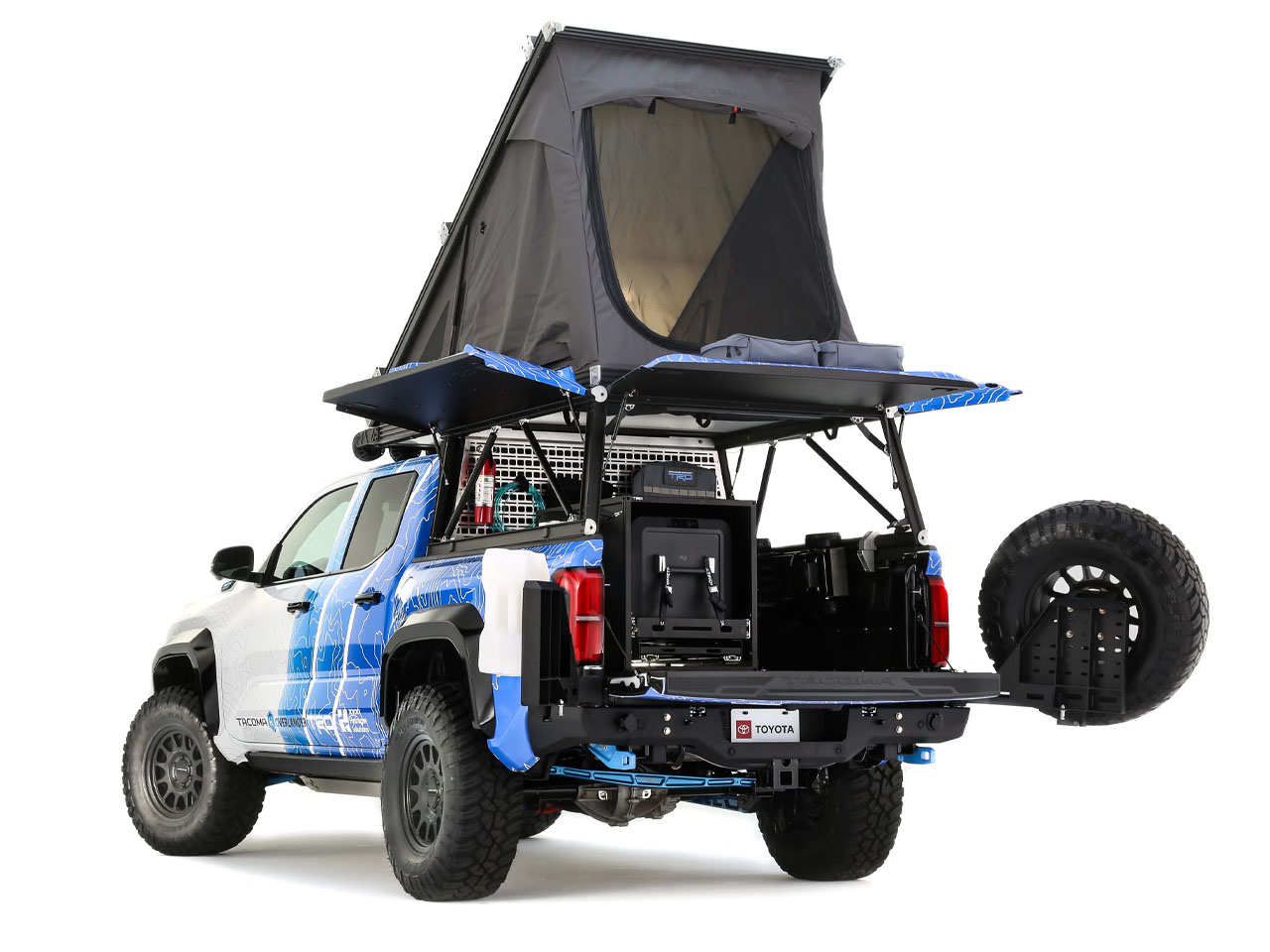
The Tacoma H2-Overlander tackles one of overlanding’s biggest contradictions: chasing pristine wilderness experiences while driving vehicles that pollute those same places. Toyota’s concept completely rethinks the relationship between adventure vehicles and environmental stewardship through its hydrogen fuel cell powertrain that only produces water as exhaust. This isn’t just an improvement; it’s a total shift toward responsible exploration.
The environmental benefits don’t come at the cost of capability either. The H2-Overlander delivers 547 horsepower through its hybrid fuel cell and battery setup, proving clean doesn’t mean weak. Toyota has integrated practical overlanding features with hydrogen fuel cell requirements, creating something that actually makes sense for sustainable adventure travel. Debuting this at SEMA 2025 shows Toyota is serious about moving hydrogen technology beyond lab experiments into real adventure scenarios.
What we like
- Zero-emission operation with water as the only exhaust byproduct enables guilt-free wilderness exploration.
- Substantial 547-horsepower output proves environmental responsibility doesn’t require performance sacrifices.
What we dislike
- Hydrogen fueling infrastructure remains extremely limited, especially in remote areas.
- Fuel cell technology adds complexity and potential maintenance challenges compared to conventional powertrains.
3. Audi Le Mans-Inspired Electric Concept

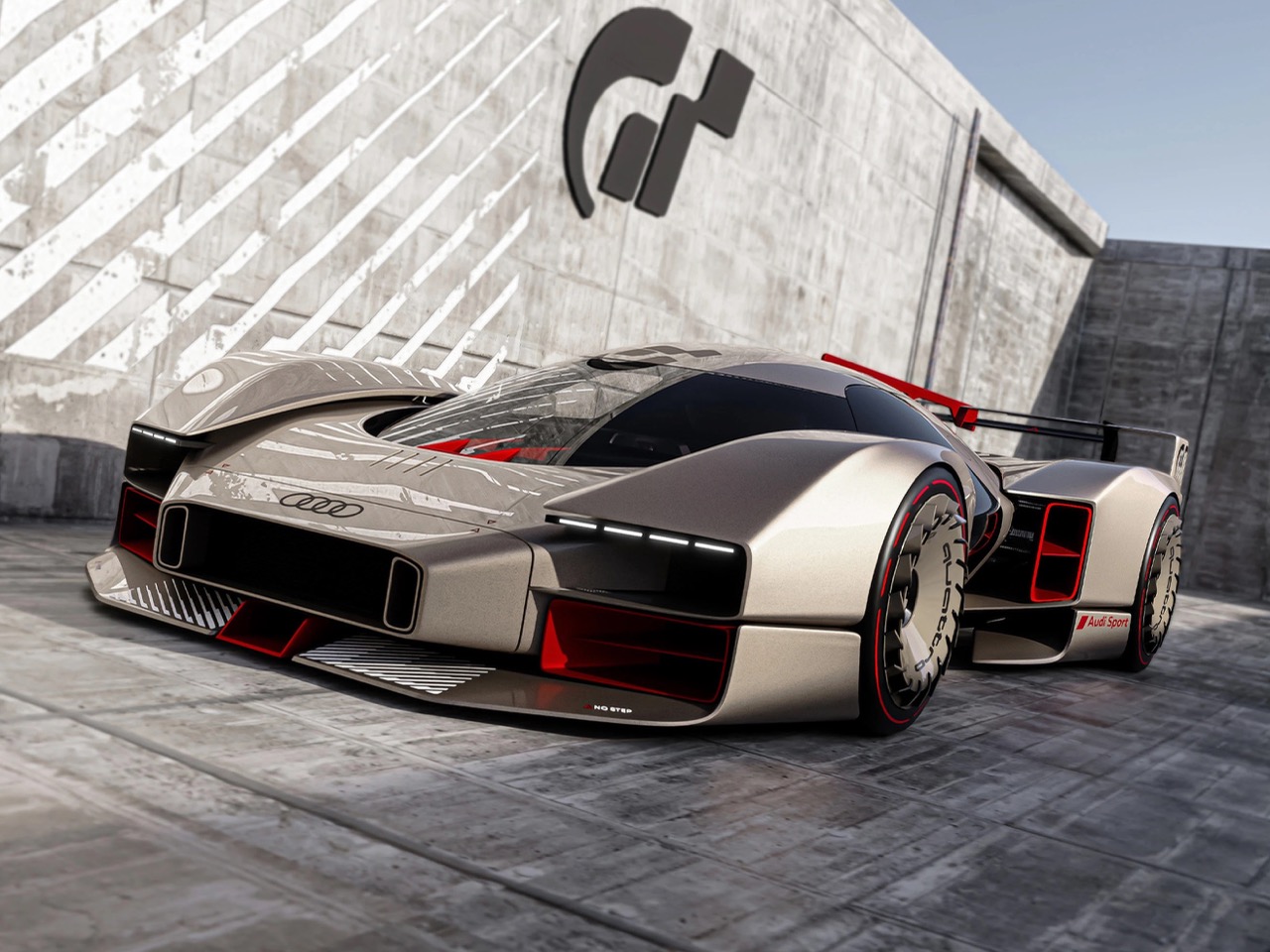
This unnamed Audi concept by designer Naretto is pure geometric aggression turned into automotive form. The design pulls heavily from Audi’s Le Mans heritage, especially the R18 e-tron, while pushing aerodynamic functionality to extremes you rarely see in road concepts. Every surface does something, from the massive front splitter that channels air under the car to the multi-layered rear wing and huge rear diffuser working together to create serious downforce.
The cab-forward proportions and impossibly wide stance connect it visually to modern prototype racers, while those enclosed wheels with turbine-like fins show serious attention to airflow management and brake cooling. The design’s relentless focus on aerodynamic efficiency over traditional beauty creates something genuinely striking. This is automotive design at its most uncompromising, where function drives every line and surface with zero concessions to conventional car aesthetics.
What we like
- Comprehensive aerodynamic package delivers genuine functional benefits rather than superficial styling elements.
- Geometric design language creates a distinctive visual identity that separates it from current market offerings.
What we dislike
- Extreme aerodynamic elements are likely impractical for road use and parking situations.
- An uncompromising design approach may limit broad market appeal beyond enthusiast audiences.
4. Honda EV Outlier Concept
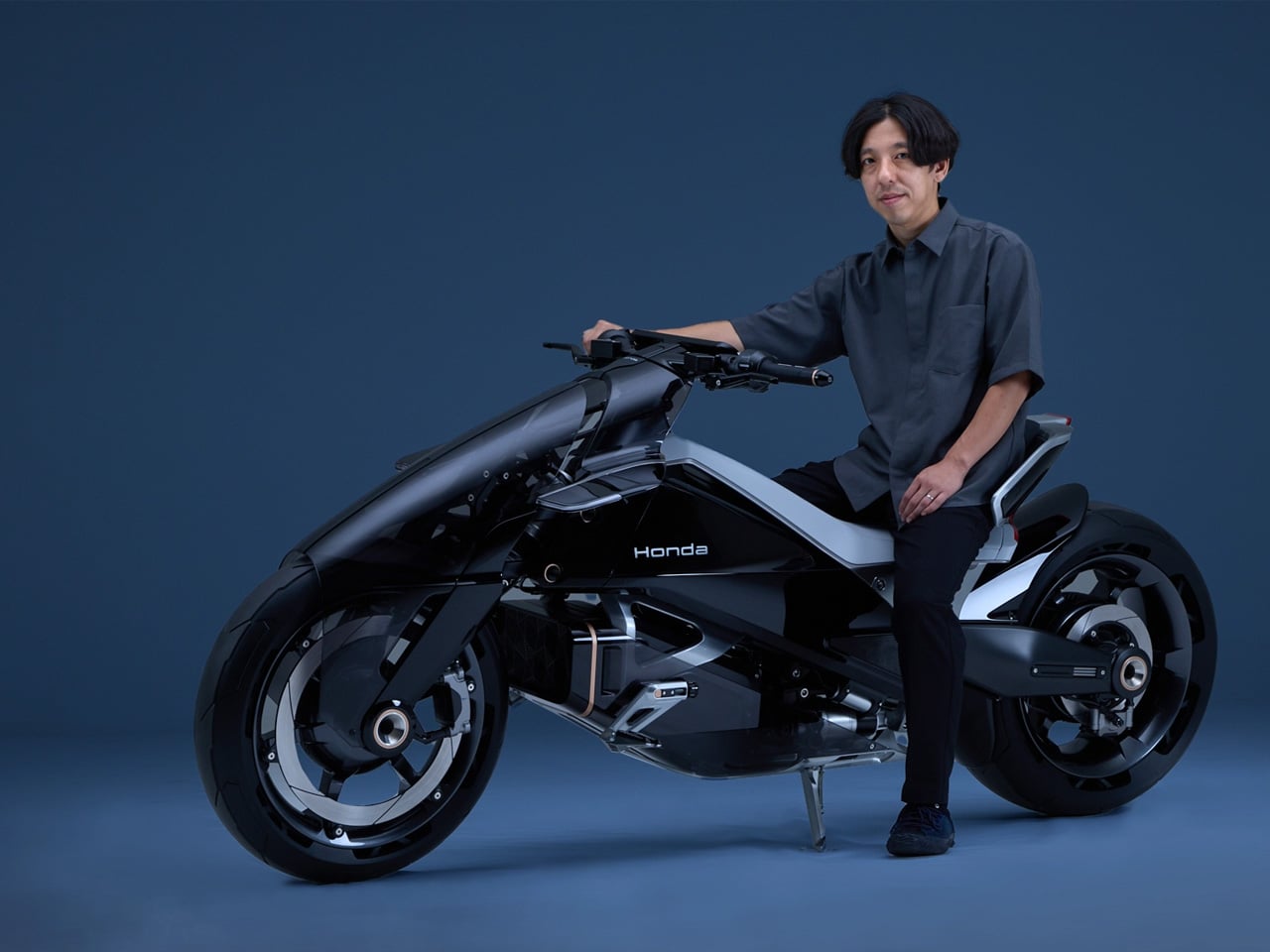

Honda’s EV Outlier Concept completely rethinks motorcycle architecture using electric propulsion as the catalyst. Mounting electric motors directly in both wheels eliminates traditional chain or belt drives, creating incredible packaging freedom and perfect weight distribution. This isn’t just slapping batteries on an existing motorcycle design; it’s reimagining what motorcycles can become when freed from internal combustion limitations.
The design philosophy of “Gliding, Ecstasy and Low” shows up in the dramatically lowered riding position and forward foot pegs, creating a stance that’s both relaxed and futuristic. The continuous LED light band and integrated tail section create a cohesive look that feels distinctly different from conventional motorcycles while keeping essential two-wheeled character. Honda’s approach suggests electric motorcycles shouldn’t just copy traditional forms but should explore completely new possibilities for rider experience and vehicle dynamics.
What we like
- Hub-mounted motors eliminate drivetrain complexity while enabling optimal weight distribution and packaging flexibility.
- Distinctive riding position and futuristic aesthetic differentiate it from conventional motorcycle designs.
What we dislike
- Hub-mounted motors may increase unsprung weight, potentially affecting handling and ride quality.
- A dramatically altered riding position may not appeal to traditional motorcycle enthusiasts.
5. Toyota Kayoibako-K Concept
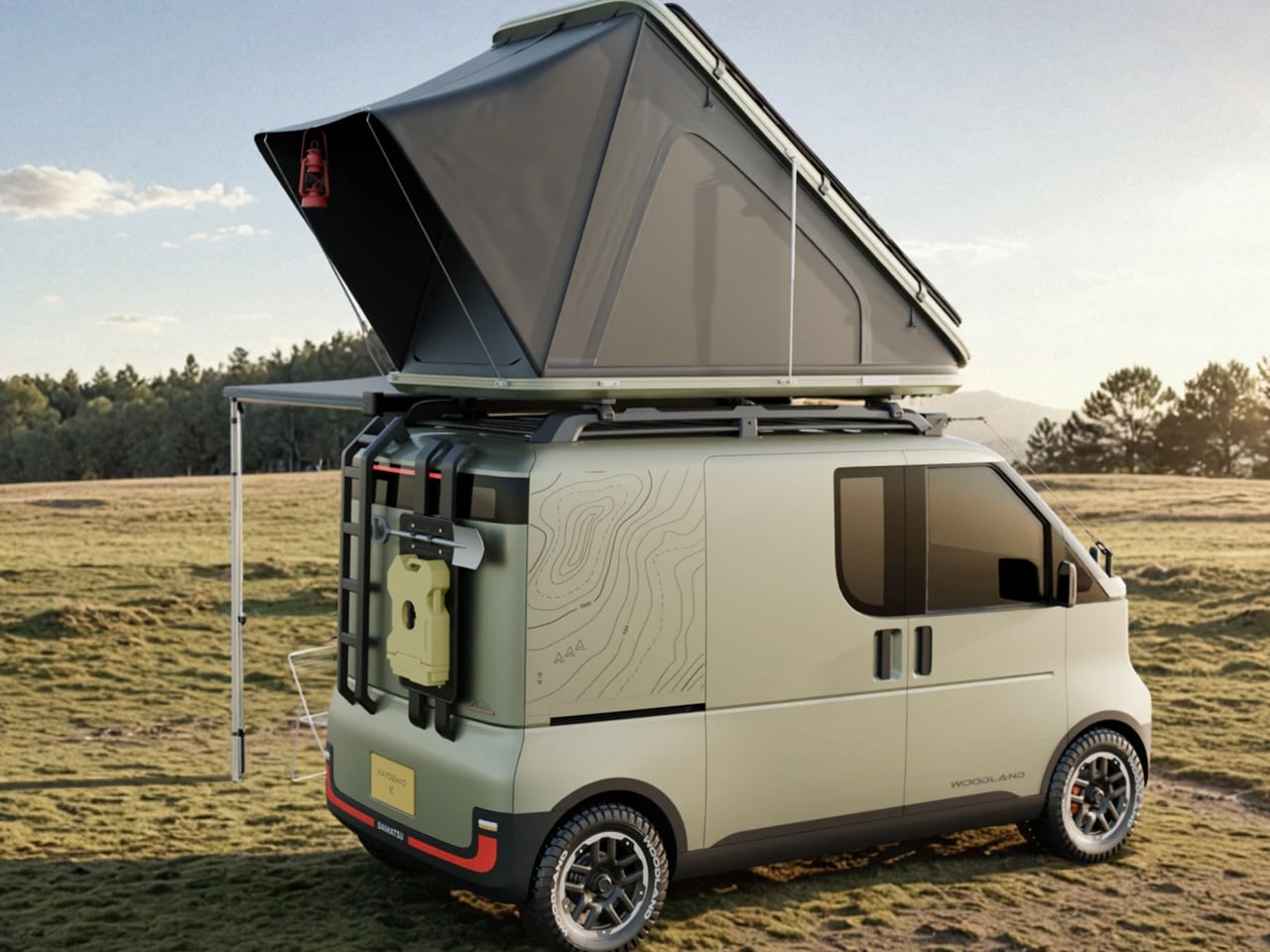

The Kayoibako-K shows Toyota’s vision for ultra-compact urban mobility that doesn’t sacrifice versatility for size. Named after Japanese shipping containers, this micro-transporter embodies modular thinking where one platform handles multiple jobs through swappable interior configurations. The concept tackles urban density challenges by providing maximum utility in minimal space, working equally well for family transport, mobile commerce, or recreational camping.
Toyota’s semi-autonomous features, while not fully self-driving, hint at mobility scenarios where vehicles can navigate to you or return to parking spots on their own. The compact dimensions work perfectly for congested cities, while the modular interior system keeps it practical for diverse uses. This is a thoughtful design that prioritizes real-world utility over flashy features, addressing genuine urban mobility challenges through smart space use and functional flexibility.
What we like
- The modular interior system provides exceptional versatility within extremely compact exterior dimensions.
- Semi-autonomous capabilities enable convenient summoning and parking functions for urban users.
What we dislike
- An extremely compact size may limit passenger comfort and cargo capacity for larger families.
- Autonomous features require infrastructure development and regulatory approval before practical implementation.
What November’s Designs Really Mean
These five concepts show manufacturers and designers finally cracking the code on balancing environmental responsibility with genuine performance and innovation. Each one tackles specific real-world problems through smart engineering and thoughtful design choices. The mix of sustainable tech with practical functionality suggests the auto industry has moved beyond surface-level electrification into meaningful design evolution.
Hydrogen power, electric propulsion, autonomous tech, and modular design thinking are coming together in ways that actually make sense. These concepts prove you can care about the environment and still build something exciting and capable. November 2025 might be remembered as when automotive design stopped talking about the future and started building it, keeping the emotional connection that makes great vehicles special.